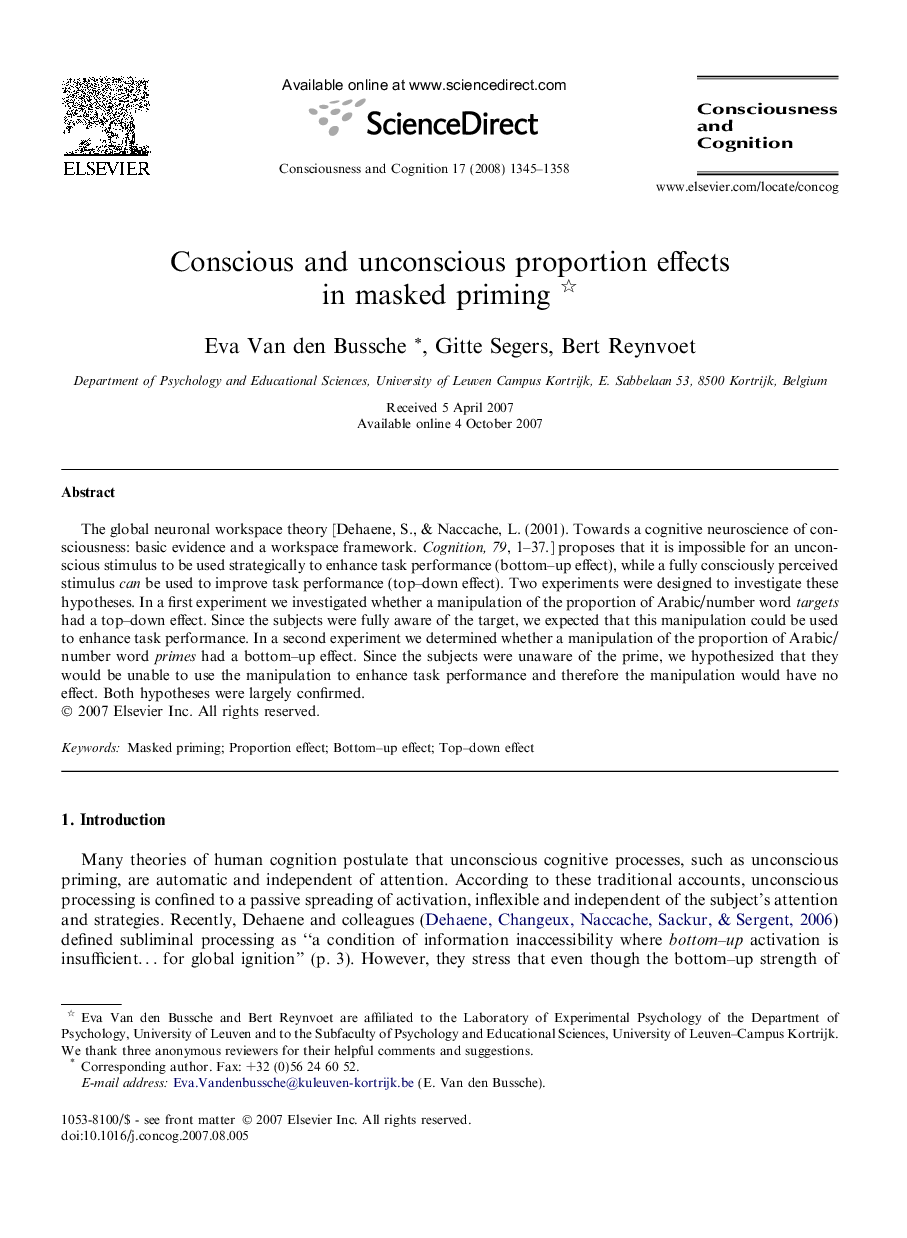| کد مقاله | کد نشریه | سال انتشار | مقاله انگلیسی | نسخه تمام متن |
|---|---|---|---|---|
| 928027 | 922287 | 2008 | 14 صفحه PDF | دانلود رایگان |

The global neuronal workspace theory [Dehaene, S., & Naccache, L. (2001). Towards a cognitive neuroscience of consciousness: basic evidence and a workspace framework. Cognition, 79, 1–37.] proposes that it is impossible for an unconscious stimulus to be used strategically to enhance task performance (bottom–up effect), while a fully consciously perceived stimulus can be used to improve task performance (top–down effect). Two experiments were designed to investigate these hypotheses. In a first experiment we investigated whether a manipulation of the proportion of Arabic/number word targets had a top–down effect. Since the subjects were fully aware of the target, we expected that this manipulation could be used to enhance task performance. In a second experiment we determined whether a manipulation of the proportion of Arabic/number word primes had a bottom–up effect. Since the subjects were unaware of the prime, we hypothesized that they would be unable to use the manipulation to enhance task performance and therefore the manipulation would have no effect. Both hypotheses were largely confirmed.
Journal: Consciousness and Cognition - Volume 17, Issue 4, December 2008, Pages 1345–1358